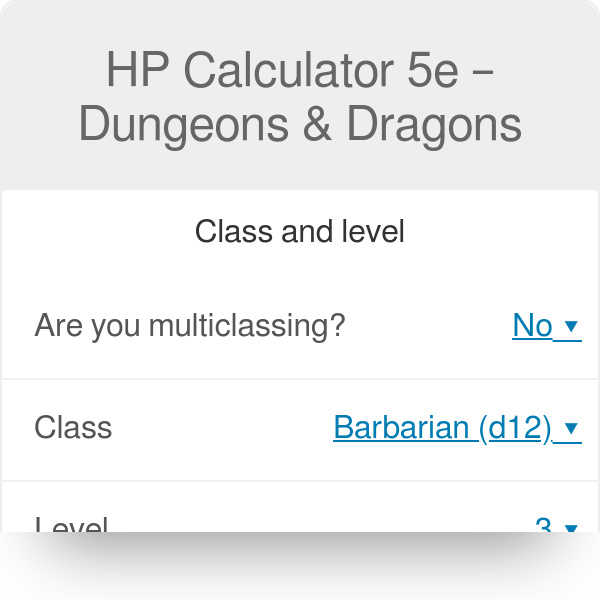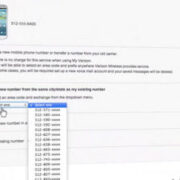Dungeons & Dragons (D&D) 5th Edition is an imaginative role-playing game where players embark on epic quests and craft intriguing stories. At the heart of D&D is your character, who navigates this fantasy world, and their hit points (HP) represent their vitality and will to keep fighting. Understanding how to calculate your character’s HP is crucial, as it affects your survivability and strategy in the game. Whether you’re a seasoned adventurer or a newcomer to the realm, mastering HP calculation is a key step in preparing for the challenges that lie ahead.

Classic Roll Method
Every character’s journey in D&D starts with their class, which determines the dice used to calculate HP. The Classic Roll Method is a traditional way of determining a character’s vitality.
- Find your class’s Hit Die: Each class has a specific Hit Die, which is detailed in the class description in the Player’s Handbook. For example, a Fighter uses a d10.
- Roll your Hit Die at each level: At 1st level, you maximize your Hit Die, adding the maximum number plus your Constitution modifier. For each subsequent level, roll your Hit Die, add your Constitution modifier, and add the total to your HP.
- Repeat at each level-up: Continue this process every time you gain a level, ensuring you add your Constitution modifier each time.
Summary: Rolling for HP involves a touch of chance and can result in high variability in your character’s toughness. The excitement of the roll adds an element of unpredictability, though the potential for low rolls can be seen as a downside for some players.
Fixed Value Method
For those preferring consistency over chance, the Fixed Value Method offers a stable alternative for HP calculation.
- Locate your class’s Hit Die and fixed value: In the Player’s Handbook, each class lists a fixed number to use instead of rolling the die.
- Use the fixed value: At 1st level, you take the maximum value of your Hit Die and add your Constitution modifier. From the 2nd level onwards, you’ll add this fixed value plus your Constitution modifier to your HP each time you gain a level.
- Level up with certainty: Every time you level up, repeat the process, consistently increasing your HP by the same amount.
Summary: Using the fixed value provides a predictable and steady increase in HP, removing the risk of low HP gains at higher levels. However, it also removes the chance of gaining higher HP through lucky rolls.
Constitution Modifier
Your Constitution modifier is key to your survivability; it boosts your HP at every level.
- Determine your Constitution modifier: Calculate this by subtracting 10 from your Constitution score, divide by two, and round down.
- Incorporate the modifier: Add your Constitution modifier to each Hit Die roll or fixed value at every level.
- Ensure accuracy at each level: As your Constitution may change with level-ups or gear, reassess and apply the current modifier each time.
Summary: The Constitution modifier’s role in HP calculation enhances your resilience and is crucial at every level. An increase in Constitution can lead to a substantial boost in HP, though it requires keeping track of any changes in your modifier.
Multi-Classing HP
Diversifying your character’s abilities through multi-classing also affects HP calculation.
- Consider each class’s Hit Die: When you gain a level in a new class, use the Hit Die associated with that class for HP calculation.
- Apply the appropriate method: Whether rolling or using a fixed value, consider the method you’ve been using for consistency.
- Pay attention to level gains: Only count the levels gained in the specific class against that class’s Hit Die.
Summary: Multi-classing allows a blend of abilities from different classes, and its HP calculations can lead to a more customized character build. Nevertheless, it can complicate keeping track of HP gains from each class.
Level 1 HP Maximization
Starting strong is important, and every character begins with the maximum possible HP at level 1.
- Identify your class’s Hit Die: Refer to the Player’s Handbook for your class’s specific Hit Die.
- Maximize your HP: Take the highest number of your Hit Die and add your Constitution modifier.
- Start your adventure: Begin the game knowing you have the maximum HP available at level 1.
Summary: Maximizing your HP at level 1 sets a strong foundation for survival in early adventures. This method ensures all players start on equal footing, regarding their class’s potential for health.
Using Feats to Increase HP
Certain feats can offer additional HP, contributing to your character’s ruggedness.
- Review available feats: Some feats, like “Tough,” directly increase HP.
- Meet the prerequisites: Ensure your character meets the necessary requirements to take the feat.
- Apply the HP benefits: Upon taking the feat, add the specified HP boost to your character’s total.
Summary: Incorporating feats into HP calculation offers a method to further customize and strengthen your character. This choice comes at the expense of other potential ability improvements or feats.
Magic Items and HP
In the world of D&D, magic items can grant temporary or permanent HP increases.
- Seek out magic items: Throughout your adventures, keep an eye out for items that boost HP.
- Understand the item’s effects: Some items add temporary HP, while others increase your maximum HP.
- Equip and calculate accordingly: Apply the HP boost from the item to your character’s total following the item’s rules.
Summary: Magic items present an exciting way to enhance HP, though they also can introduce complexity in tracking temporary versus permanent HP increases.
Temporary Hit Points
Temporary hit points can act as a buffer, absorbing damage that would otherwise reduce your actual HP.
- Gain temporary HP: Through spells, class features, or magic items, you may receive temporary HP.
- Use them first: When taking damage, deduct from your temporary HP before your actual HP.
- Track them separately: Remember, temporary HP does not stack and should be tracked next to your character’s HP.
Summary: Temporary HP provides a strategic advantage in combat, but it’s essential to monitor them separately as they offer only a momentary boost.
Resting and HP Recovery
Resting is essential for regaining HP after a day’s adventures.
- Understand the types of rests: Short rests allow you to roll Hit Dice to regain HP, while long rests typically restore all HP.
- Use Hit Dice during short rests: Spend Hit Dice and add your Constitution modifier to recover HP.
- Enjoy full restoration with long rests: After a long rest, your character regains all lost HP and refreshes spent Hit Dice (up to half of your total Hit Dice).
Summary: Rest periods are your primary means of recovering HP, crucial for maintaining your character’s health over multiple encounters. However, relying solely on long rests may not always be feasible in a dungeon or danger-filled area.
Other Sources of HP Gain
Outside of leveling up and resting, there are other means to regain HP in the game.
- Healing spells and abilities: Characters with healing spells or abilities can restore HP to themselves or allies.
- Potions and consumables: Health potions and similar items provide immediate HP recovery.
- Special abilities: Some class features, like a Paladin’s Lay on Hands, offer unique ways to regain HP.
Summary: These additional HP recovery methods serve as vital resources in and out of combat, enabling your character to sustain and continue adventuring. They provide flexibility and options, especially when traditional resting isn’t possible.
In conclusion, calculating and managing HP is an integral aspect of D&D gameplay, adding both strategic depth and a layer of realism to your character’s journey. While the process involves several variables, from your character class’s Hit Die to Constitution modifiers and beyond, mastering the calculation of HP ensures you’re prepared for whatever encounters your Dungeon Master has in store. Whether through rolling dice, choosing feats, wielding magical items, or taking a well-deserved rest, each method of calculating and recovering HP shapes the survival and stories of your character in the fantastic world of D&D.
FAQs
-
What happens if my character’s HP reaches zero?
If your character’s HP drops to zero, they become unconscious and must start making death saving throws on subsequent turns unless stabilized or healed. -
Can my character’s HP go above their maximum HP?
Generally, your character’s HP cannot exceed their maximum, but temporary HP can act as an additional buffer on top of their max HP. -
Do I have to roll for HP at each level if I don’t want to?
No, the Fixed Value Method gives you the choice to use a consistent, predetermined amount instead of rolling for HP when you level up.









